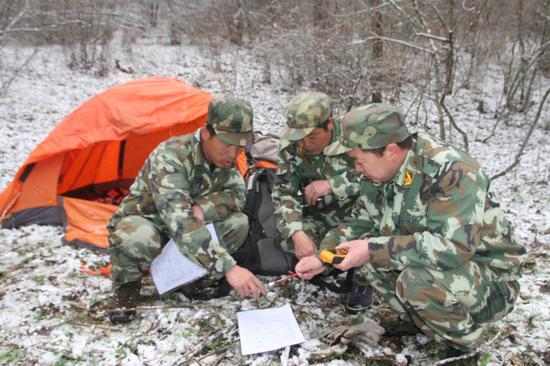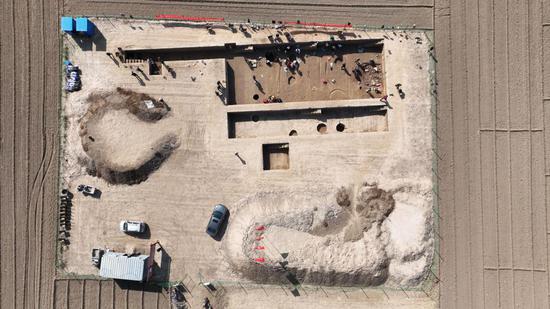
Researchers recorded data during the fourth giant panda census. (Photo provided to chinadaily.com.cn)
When the distance between two trace points falls within the potential activity range of a single panda, further identification using bite mark differentiation can be applied to enhance the accuracy of the census.
"Ninety-nine percent of a giant panda's diet consists of bamboo, which they cannot fully digest. The undigested bamboo stem fragments found in their feces are called bite marks. Due to variations in individual digestive capabilities, there can be significant differences in the average number of bite marks in feces," Xu said.
"By comparing characteristics like bite mark lengths, we can determine if the feces in an area were left by the same panda," he added.
In the NYT article, some foreign experts proposed using infrared cameras and DNA analysis to assess the panda population.

Researchers of the fourth giant panda census. (Photo provided to chinadaily.com.cn)
However, Chinese experts have argued that due to their similar appearances, it is challenging to differentiate individual pandas from infrared camera photos. Additionally, DNA analysis requires fresh panda feces, making it impractical for large-scale operations and unable to reflect the total panda population nationwide.
"The survey methods used by Chinese giant panda experts have a complete process flowchart and calculation method, and are currently the most reliable among existing methods," Xu said.
"We are also exploring new technologies for giant panda population assessment and individual identification. With advancements in technology, especially the application of artificial intelligence, big data and the emergence of new equipment, future panda surveys will be more efficient, and population assessments will be more accurate," he added.


















































 京公网安备 11010202009201号
京公网安备 11010202009201号